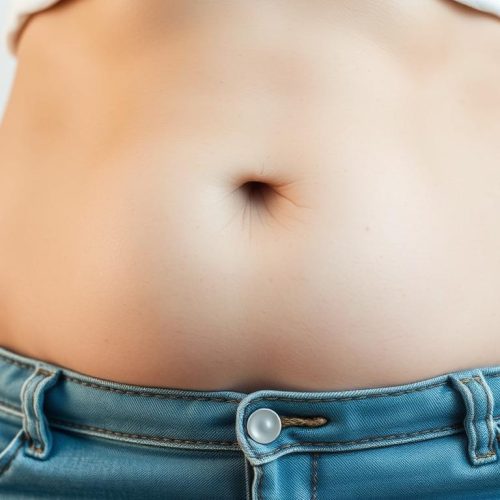Diabetes cannot be cured, but with medicine and changes in lifestyle, its progression can be slowed down or even reversed. Additionally, some claim that supplementary techniques, such as the “pinch method,” might occasionally help control diabetes.
A particular form of self-acupressure is the pinching method. Theoretically, pinching oneself can rapidly restore blood sugar levels. The concept has gained some traction within the realm of complementary medicine and among those seeking simple solutions for blood sugar regulation.
The theory behind this pinch approach is that it improves glucose metabolism and swiftly increases insulin production. You can use it every day or when your blood sugar is elevated.
Indicators of Elevated Blood Sugar
Hyperglycemia, or increased blood sugar, is a condition that those with type 2 diabetes must be mindful of and manage. Here are a few obvious indicators of high blood sugar:
- An increase in thirst
- An increase in the amount of urine
- Weakness and fatigue
- Headaches
- Blurred Vision
The best method for figuring out if you’re suffering from hyperglycemia, however, is to test your blood sugar levels. Testing for blood sugar is recommended for diabetics, albeit the amount of testing is dependent on the patient and if insulin is being taken.
How frequently you should check your blood sugar level should be discussed with your physician. You must take action to decrease your blood sugar if it is raised. To identify the cause, you should also record the times when your blood sugar surges from electricity.
How Can My Blood Sugar Be Lowered?
Fast-acting insulin provides the best solution if you take insulin for acutely high blood sugar levels, but you must use caution. Consult your physician before taking insulin to control high blood sugar, as doing so can potentially worsen the condition by causing the blood sugar level to drop too low.
One way to reduce blood sugar is to engage in mild physical activity, like walking. Be aware that you ought to test the urine for ketones before exercising if your physician has given you this instruction.
Water is another option. As the body tries to flush out more sugar, hyperglycemia may cause frequent urination, which can lead to dehydration. This can be remedied by drinking water, which can also assist your body’s natural lowering of blood sugar.
Consult your doctor about adjusting how you handle diabetes if you are having episodes that recur.
The sunrise effect refers to the high levels of sugar in the blood experienced by certain diabetics in the early hours of the day. Exercise as you get up can be helpful in this situation. To monitor the reasons behind your blood sugar spikes, you can also keep a journal and discuss with your doctor the possibility of adjusting your insulin or medicine.
This can differ from person to person and could involve particular foods or stress.
In addition form sugar, watch carefully for high starch content as well. Although it can elevate glucose even more than sugar, diabetics frequently wrongly believe that high starch content is harmless.
Much more serious is hypoglycemia, or low blood sugar levels, which can result in a coma. It is uncommon in type 2 diabetes, though. In type 2 diabetes, problems with levels of insulin usually constitute the cause.
How to treat type 2 diabetes with the pinch method
The pinch method is applied as follows: you hold both the index and thumb of one hand slightly above the wrist of the other hand, and then you apply a small amount of pressure to the wrist.
It is said that by doing this, adrenaline will be released and glucose will be broken down. Advocates advise doing it daily to aid in blood sugar control and if your blood sugar level is excessive.
You won’t be hurt doing this, of course, but does it work?
Learn more: How long does a hyperfixation usually last?
Does type 2 diabetes respond well to the pinch method?
There is no proof at all that the effective “pinch method” lowers or “resets” blood sugar quickly. The placebo effect is probably at play if it has any impact at all.
Although the pinch approach is safe by and of itself if you are experiencing an insulin increase, it may cause you to put off taking more effective action. It demonstrates the need for caution when pursuing alternative therapies that you come across online. It is not possible to boost glucose metabolism and insulin levels concurrently with simple acupressure. That is not even close to the complexity of the system.
On the other hand, there is some evidence that when self-acupressure is performed properly, it can raise insulin levels and hence lower blood sugar. Traditional Chinese acupuncture points were used in the trial technique, specifically at:
ST-36, a finger at the side of the tibial plateau and three centimeters behind the patella
5 cm above the tibial internal angle is SP-6.
LIV-3 is the level that connects the dorsal foot flexors at the bone junction between the first and second fingers.
KD-3, situated amidst the Achilles tendon and medial ankle
The participants needed to be instructed in the proper use of this technique, which consisted of applying intermittent pressure to each location for five minutes at a time. It did demonstrate a reduction in blood sugar, particularly when paired with hypnosis and meditation with transcendence.
However, this method differs significantly from the pinch method and should be used as part of a management program under the guidance of a complementary medicine specialist who can verify that you are doing it correctly.
Furthermore, self-acupressure cannot take the place of conventional blood sugar management techniques. But if you’re seeking other ways to take care of your diabetes, you might want to look into this.



